Antibody data
- Antibody Data
- Antigen structure
- References [0]
- Comments [0]
- Validations
- Western blot [2]
- Immunocytochemistry [1]
- Immunohistochemistry [1]
- Flow cytometry [1]
Submit
Validation data
Reference
Comment
Report error
- Product number
- F51354 - Provider product page

- Provider
- NSJ Bioreagents
- Product name
- SOCS1 Antibody / TIP3 / SSI1
- Antibody type
- Polyclonal
- Description
- This highly specific SOCS1 antibody is suitable for use in Western blot/Immunohistochemistry/Immunofluorescence/Flow cytometry/ELISA applications with human, mouse and rat samples.
- Reactivity
- Human, Mouse, Rat
- Host
- Rabbit
- Conjugate
- Unconjugated
- Vial size
- 0.08 ml, 0.4 ml
- Concentration
- In 1X PBS, pH 7.4, with 0.09% sodium azide
- Storage
- Aliquot the SOCS1 antibody and store frozen at -20oC or colder. Avoid repeated freeze-thaw cycles.
No comments: Submit comment
Supportive validation
- Submitted by
- NSJ Bioreagents (provider)
- Main image
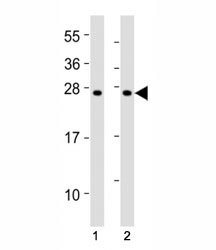
- Experimental details
- Western blot testing of SOCS1 antibody at 1:2000 dilution. Lane 1: mouse thymus lysate; 2: rat spleen lysate; Predicted molecular weight ~ 24 kDa.
- Submitted by
- NSJ Bioreagents (provider)
- Main image
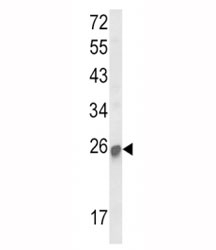
- Experimental details
- Western blot analysis of SOCS1 antibody and mouse kidney tissue lysate. Predicted molecular weight ~ 24 kDa.
Supportive validation
- Submitted by
- NSJ Bioreagents (provider)
- Main image
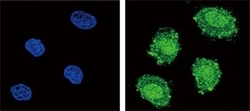
- Experimental details
- Confocal immunofluorescent analysis of SOCS1 antibody with 293 cells followed by Alexa Fluor 488-conjugated goat anti-rabbit lgG (green). DAPI was used as a nuclear counterstain (blue).
Supportive validation
- Submitted by
- NSJ Bioreagents (provider)
- Main image
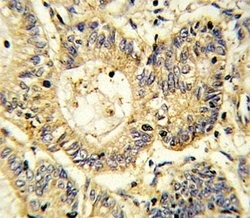
- Experimental details
- IHC analysis of FFPE human colon carcinoma stained with SOCS1 antibody
Supportive validation
- Submitted by
- NSJ Bioreagents (provider)
- Main image
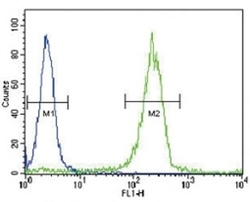
- Experimental details
- SOCS1 antibody flow cytometric analysis of WiDr cells (green) compared to a negative control (blue). FITC-conjugated goat-anti-rabbit secondary Ab was used for the analysis.
 Explore
Explore Validate
Validate Learn
Learn Western blot
Western blot ELISA
ELISA